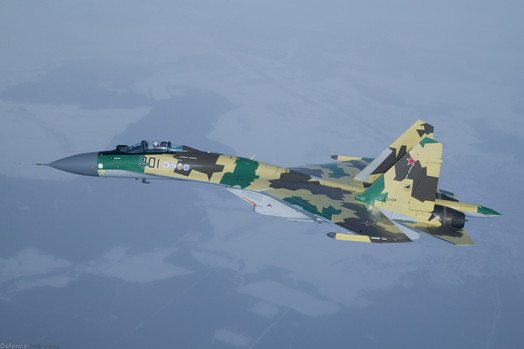The National Security Space Strategy released Feb. 4 responds to the realities of a space environment that is increasingly crowded, challenging and competitive, senior Defense Department officials said.
“The National Security Space Strategy represents a significant departure from past practice,” said Defense Secretary Robert M. Gates. “It is a pragmatic approach to maintain the advantages we derive from space while confronting the new challenges we face.”
Ambassador Gregory L. Schulte, the deputy secretary of defense for space policy said that this is the first National Security Space Strategy co-signed by the secretary of defense and the director of national intelligence.
“Space has changed in fundamental ways, and that requires us to change our strategy,” Mr. Schulte said.
Secretary Gates and Director of National Intelligence James R. Clapper “have signed a document that shows the new directions we need to go,” he added.
The 10-year strategy concludes the congressionally mandated Space Posture Review by providing strategic objectives and approaches for national security space.
Officials from the Defense Department and the intelligence community submitted an interim report to Congress in March 2010 that delayed a review of national security space policy and objectives until after the release of the U.S. National Space Policy in June 2010.
Perhaps the strategy’s most important message, Mr. Schulte said, “is that we have to think differently about how we operate in space.”
For example, he said, “we have to think about how to encourage other countries to act responsibly in space and how the United States can provide leadership in that regard.
“Secondly,” he added, “we have to think about how we can better leverage the growing amount of foreign commercial capabilities that are now in space. And third, we need to think differently about how to deter others from attacking our space assets.”
As in the past, he said, the Defense Department must protect space capabilities to protect the warfighter, whether it’s communications, surveillance or global positioning.
“It’s space that allows our Soldiers to see over the next hill,” Mr. Schulte said. “It’s space that allows us to communicate quickly. It’s space that allows us to see whether hostile missiles are launched, so we need to preserve that capability.
“Our goal is to make the peaceful use of space available to all countries,” he added, noting that the peaceful use of space includes support for critical defense capabilities.
“Space becomes critical to everything we do, and that’s why we’re worried that the environment is increasingly challenging,” Mr. Schulte said. “You have more debris in space and you have countries that are developing counterspace capabilities that can be used against us. That’s why this strategy emphasizes the need to protect our capabilities, protect our industrial base and protect the space domain itself.”
U.S. Strategic Command officials at Offutt Air Force Base, Neb., are working with other countries and commercial firms to increase situational awareness in space.
“STRATCOM was once in charge of delivering nuclear weapons,” Mr. Schulte said. “STRATCOM is now also delivering warnings of potential collisions in space to any variety of countries because we have an interest in preventing more collisions and more debris.”
The military also must begin to consider operating in coalitions in space, he said.
“In just about every other domain — at sea, in the air, on the ground — we operate with allies and partners,” Mr. Schulte said. “There are good reasons to do it.”
Potential partners include members of NATO, whose new 10-year strategic concept issued last year “acknowledged for the first time that access to space is something you can’t take for granted,” he said.
The Joint Space Operations Center at Vandenberg Air Force Base, Calif., is a focal point for the operational use of worldwide U.S. space forces, Mr. Schulte said, and it allows the commander of STRATCOM’s joint functional component command for space to integrate space power into global military operations.
“We would like to make that into a (combined center),” Mr. Schulte said, “where we bring in our closest allies and eventually others, so that like in other domains, we can conduct combined operations.”
The 10-year National Security Space Strategy will require at least that long to implement, he said.
“You will see some early indications of it in the president’s budget for 2012, and you will see more in his budget for 2013, but ultimately what we’re trying to do is affect programs of the services, particularly the Air Force, over the longer term,” Mr. Schulte said. “We’re trying to affect how we train; we’re trying to affect how we plan, and we’re trying to affect the diplomacy we conduct with the Department of State. So I think you’ll see (the strategy) roll out in many different ways. In fact, you’re already seeing elements of it.”
On Jan. 6, Secretary Gates announced that he would use some of the efficiency savings Air Force officials identified to invest in the U.S. launch capability to help in protecting the industrial base, Mr. Schulte said.
Defense Department officials are working with officials in Australia on the sharing of space situational awareness, and are talking to the commercial sector about how DOD can host payloads on their satellites, he said.
“And we’re looking for a whole range of activities to implement the new strategy in a budget-constrained environment,” he added.
Mr. Schulte said that to get DOD organized for space, Deputy Defense Secretary William J. Lynn III created the Space Defense Council, to be chaired by Air Force Secretary Michael Donley.
“The secretary and the deputy have entrusted to Secretary Donley the role of moving forward with our strategy,” he said, “and the Defense Space Council provides a forum to do that.”











